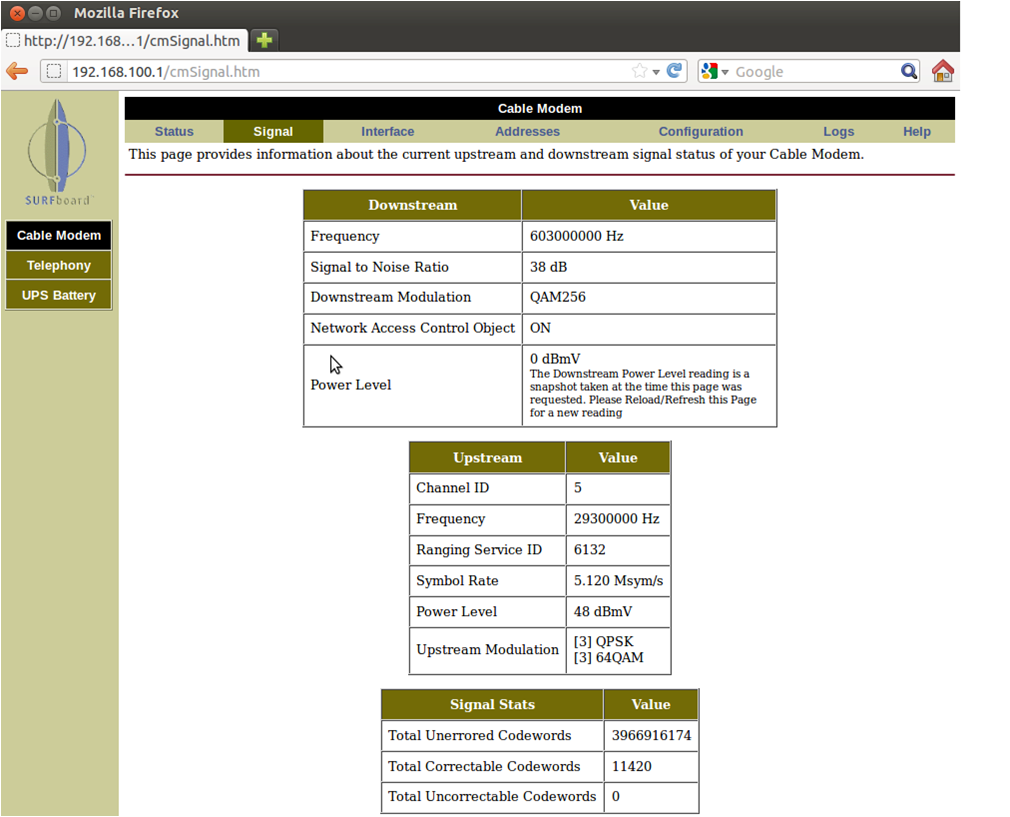| Pyrimme paikallistaa sivuillamme niin monella kielellä kuin mahdollista, mutta tämä sivu on tällä hetkellä kone Google-kääntäjän avulla. | lähellä |
-
-
tuotteet
-
resurssit
-
tuki
-
yritys
-
Oppia 192.168.0.1 ja miten perustaa modeemin InternetLearn about 192.168.0.1 and how to set up your modem for the Internet
Mennessä Steve Horton Toukokuu 19, 2014192.168.0.1, internet, modem, routerEi kommenttejaJos olet äskettäin perustanut uuden kaapelimodeemin, kuituoptisen yhdyskäytävän tai langattoman reitittimen, se ei useinkaan toimi suoraan laatikosta. Tämä pätee erityisesti silloin, jos modeemisi tai yhdyskäytävälläsi ei ole langatonta kykyä, joten liität siihen reitittimen. Yhdyskäytävän tai modeemin määrittäminen reitittimen kanssa voi olla hankalaa ja vaatii usein IP-osoitteen kirjoittamista verkkoselaimeen.
Tämä IP-osoite löytyy tavallisesti laitteen takaosasta tai käsikirjasta, kuten oletusnimi ja salasana.
Syötä 192.168.0.1 selaimessa
Jos olet yhden laitteen asetuksissa, tämä IP-osoite on yleensä 192.168.0.1. Kun olet liittänyt modeemin tai yhdyskäytävän suoraan Internetiin ja tietokoneeseen, kokeile sitä osoitetta selaimessasi, vaikka se sanoo, että et voi päästä Internetiin. Saat todennäköisesti kirjautumis- ja salasananäytön.
Aseta oletusasetukset, yleensä admin ja salasana , varmista ja muuta oletusasetuksia välittömästi.
Tässä on tyypillinen kaapelimodeemin asetusnäyttö. Määritä se Internetissä napsauttamalla Configuration.Kun olet syöttänyt 192.168.0.1, olet reitittimen asetukset -näytössä. Yleensä on mahdollisuus määrittää automaattisesti. Joskus Internet-palveluntarjoajallasi on kuitenkin staattinen tai kiinteä IP-osoite ja myös verkkotunnusten palvelinformaatio, mikä kääntää englanninkieliset verkkosivustot numeerisiin IP-osoitteisiin. Jos näin on, sinun on annettava nämä tiedot manuaalisesti.
Tallenna ja käynnistä uudelleen
Joka tapauksessa reitittimen tallentamisen ja uudelleenkäynnistyksen jälkeen sinun on oltava yhteydessä Internetiin! Jos näin ei ole, saatat soittaa Internet-palveluntarjoajaasi saadaksesi sinut toimimaan. Joskus saat laitteen CD-levyllä tai kun ostat Internet-palvelun, ja tämä CD-levy auttaa sinua luomaan myös.
Kaksi laitetta
Seuraava sarjan artikkeli kattaa kaksi laitetta , joissa on langaton reititin liitettynä kaapelimodeemiin, DSL-reitittimeen tai FiOS-yhdyskäytävään.
Was this post helpful?YesNoVapaa Ajurin päivitykset
Päivitä ajurit alle 2 minuutissa nauttiaksesi paremmasta PC:n suorituskyky - Vapaa.
Vapaa Ajurin päivitykset
Päivitä ajurit alle 2 minuutissa nauttiaksesi paremmasta
PC:n suorituskyky - Vapaa.
Etkö löytänyt vastausta?Kysy kysymys yhteisöömme asiantuntijoita ympäri maailmaa ja saada vastauksen hetkessä.oleellisin Viimeaikaiset artikkelit Kiinnitä se Pinterestiin